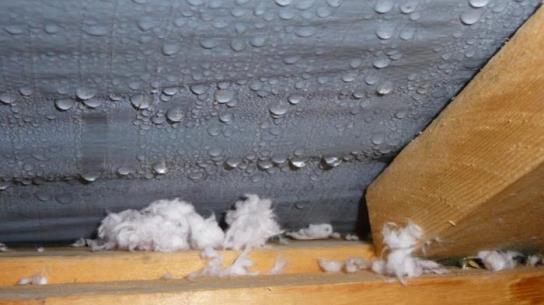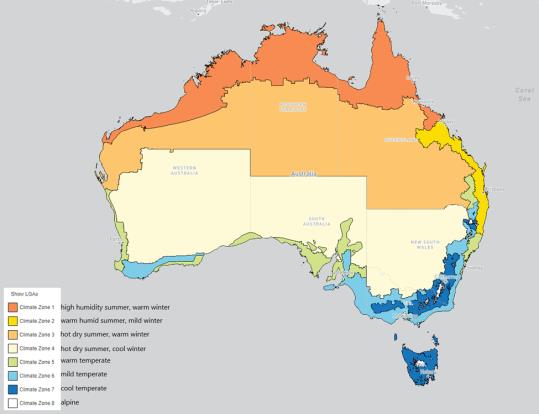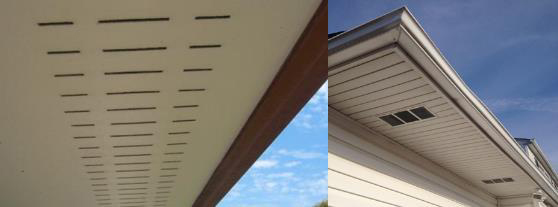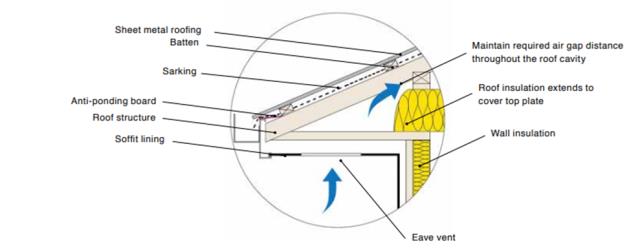News
Condensation Management

Condensation Management In Roof Cavity
Condensation in a roof cavity refers to the process by which water vapour in the air inside the roof space changes from a gas into liquid droplets when it comes into contact with colder surfaces, such as the underside of the roof or roof truss components. This phenomenon occurs due to temperature differentials between the warm, moist air inside the roof cavity and the cooler surfaces of the roof structure. Condensation can be a common issue in roof cavities, especially in climates where temperature fluctuations and humidity levels vary.

Figure 1 – Condensation in roof space (Photo retrieved from Agassiz Roofing, agassizroofing.com)
What causes condensation?
There are two main causes of condensation in majority of homes in Australia: Thermal bridging and excess amount of water vapour in the house. Thermal bridges are paths where heat can transfer through walls, ceiling or floors, regardless of insulation. When the warm air comes into contact with cooler air or surfaces, the loss of energy will cause the water vapour to condense (See Figure 1). The main method to remove water vapour is ventilation.
Climate Zone & Ventilation
The National Construction Code (NCC) in Australia defines climate zones to categorize different regions of the country based on their unique climatic conditions.
This zoning system ensures that buildings are designed to be energy-efficient, comfortable, and structurally sound, taking into consideration the local climate’s impact on construction and performance.
There are total of eight zones that consider factors such as temperature, humidity, and rainfall patterns.

Figure 2 – Climate zone map in NCC
In latest ABCB Housing Provisions, condensation management requires ventilation of roof spaces. In climate zones 6, 7 and 8, areas where temperatures can be mild and cold, a roof must have a space that is either ventilated to outdoor air through evenly distributed openings in accordance with following Table 10.8.3 or located immediately underneath the roof tiles of an unsarked tiled roof.
| Roof Pitch | Ventilation Openings |
|---|---|
| < 10° | 25,000 mm2/m provided at each of two opposing ends |
| ≥ 10° and < 15° | 25,000 mm2/m provided at the eaves and 5,000 mm2/m at high level |
| ≥ 15° and < 75° | 7,000 mm2/m provided at the eaves and 5,000 mm2/m at high level, plus an additional 18,000 mm2/m at the eaves if the roof has a cathedral ceiling |
Table 1 – ABCB Housing Provisions Table 10,8.3
Table notes:
- Ventilation openings are specified as a minimum free open area per meter length of the longest horizontal dimension of the roof.
- For the purpose of this Table, high level openings are openings provided at the ridge or not more than 900mm below the ridge or highest point of the roof space, measured vertically.
A roof ventilation system plays a pivotal role in maintaining the health and longevity of a building’s structure. A well-ventilated roof space helps mitigate the risk of condensation, which can lead to moisture-related problems such as wood rot, mould growth, and corrosion of metal components. Continuous eave vent and spaced eave vent are two common ventilation systems widely used in Australia. (Refer to Figure 3 and 4).

Figure 3 – Continuous eave vent (Left) and spaced eave vent (Right)

Figure 4 – Eaved roof with eave vent (Retrieved from CBOS, Condensation in Buildings – Tasmanian Designers’ Guide – Version 2)
Conclusion
Corrosion refers to the gradual deterioration of materials, especially metals, due to chemical reactions with the environment. In a roof cavity, metal components such as nailplates, connectors, or fasteners can corrode over time if exposed to moisture and salt air.
Condensation and corrosion are interconnected and often coexist within certain environments, particularly in building structures like roof cavities. The connection between condensation and corrosion lies in the fact that condensation creates a moist environment within the roof cavity. This moisture can accelerate the corrosion process of metal components within that space. So, while they are not archenemies in the sense of actively opposing each other, the presence of condensation can contribute to conditions that promote corrosion.
To effectively manage both condensation and corrosion, it’s crucial to implement proper ventilation, insulation, and moisture control measures within the roof cavity, ensuring the longevity and structural integrity of the building.
 David Zhang
David Zhang
Lead Structural Engineering
david.zhang@multinail.com
07 3297 3272
Let’s Work Together